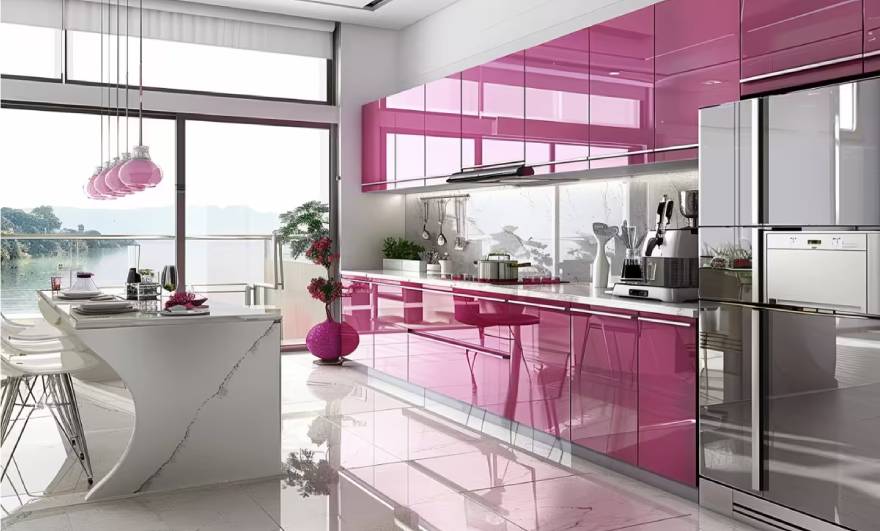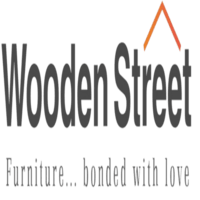Modern Kitchen Design: Blending Function and Style

Strong 8k brings an ultra-HD IPTV experience to your living room and your pocket.
In today’s homes, the kitchen is no longer just a space for cooking—it has become a hub for family gatherings, entertaining, and even remote work. As a result, modern kitchen design has evolved to blend functionality with aesthetics, creating spaces that are as practical as they are beautiful. Whether you're renovating or designing from scratch, understanding key elements of modern kitchen design can transform your space into a highly efficient, stylish environment.
1. Minimalist Aesthetic
One of the main trends in modern kitchen design is the minimalist aesthetic, which focuses on clean lines, clutter-free spaces, and a sense of openness. Minimalism is all about simplifying your kitchen to its most essential components. This style often features flat-panel cabinets, neutral colors like whites, grays, and blacks, and sleek, unadorned surfaces.
One of the hallmarks of minimalist design is the reduction of visual clutter. This can be achieved by incorporating hidden storage, integrated appliances, and even seamless countertops made from materials like quartz or concrete. The goal is to create a streamlined environment that feels spacious and organized, even in smaller kitchens.
2. Smart Kitchens
Technology is a defining feature of modern kitchen design. Smart kitchens incorporate appliances that not only look sleek but also offer advanced functionality. From refrigerators with touchscreens to ovens that can be controlled via smartphone apps, modern kitchens are becoming more intuitive and efficient.
For example, smart refrigerators can track grocery inventory, suggest recipes, or even display photos and calendar reminders. Induction cooktops and smart ovens allow for precise temperature control and can be programmed to turn off automatically. The integration of voice assistants like Amazon’s Alexa or Google Assistant is also becoming common, allowing homeowners to control lights, appliances, and even music through simple voice commands.
3. Open Shelving
Open shelving has become a popular feature in modern kitchens, as it encourages a more relaxed and inviting atmosphere. Instead of traditional closed cabinetry, open shelves allow for easy access to everyday kitchen items, such as dishes, glasses, and cooking utensils.
While this design can create an airy, visually pleasing look, it does require a bit of upkeep. To make open shelving work, it's important to maintain an organized, aesthetically cohesive display. Consider using containers and baskets to corral smaller items and keep everything from looking chaotic. Another strategy is to mix open shelving with closed cabinets to balance functionality with visual appeal.
4. Sustainable Design Elements
Sustainability is becoming an increasingly important consideration in modern kitchen design. Homeowners are choosing eco-friendly materials and energy-efficient appliances to minimize their environmental impact. Sustainable kitchens use materials such as bamboo, reclaimed wood, and recycled glass, which are both stylish and environmentally responsible.
Energy-efficient appliances—like dishwashers, refrigerators, and lighting—help to reduce the kitchen's carbon footprint while saving money on utility bills. Water-saving faucets and systems that optimize energy consumption are also key components of a modern, eco-conscious kitchen. When combined with design features that promote waste reduction (such as composting stations or recycling bins), a sustainable kitchen creates a more responsible and efficient cooking environment.
5. Multi-Functional Layouts
Gone are the days when the kitchen was merely a place to prepare meals. Today, kitchens are designed with flexibility in mind, incorporating spaces for working, socializing, and even relaxing. An open-concept layout is one of the most popular choices, as it allows for easy movement between the kitchen and other living areas like the dining room or family room.
Kitchen islands have also become a central feature, offering extra storage, additional counter space, and even seating for casual meals or socializing. In some cases, islands serve as multi-functional workspaces, with built-in sinks or cooktops. This flexibility makes modern kitchens ideal for homeowners who enjoy entertaining or need a space that accommodates various activities.
6. Bold Color Schemes and Unique Materials
While modern kitchens often embrace neutral tones, there has also been a rise in bold and striking color choices. Deep navy blues, forest greens, and even rich jewel tones are being incorporated into cabinetry, backsplashes, and countertops. These colors make a statement and add personality to the space.
In addition to color, unique materials are increasingly being used in modern kitchen design. Statement-making materials, like marble, terrazzo, and concrete, are often used for countertops, backsplashes, or flooring. These materials not only elevate the look of the kitchen but also offer durability and functionality.
7. Customizable Storage Solutions
A modern kitchen is only as functional as its storage systems. As kitchen spaces become more compact, maximizing storage potential is key. Customizable storage solutions are at the forefront of modern kitchen design, offering homeowners flexibility in how they store everything from cookware to pantry items.
Pull-out pantry shelves, deep drawers with organizers, and built-in cabinets for specific purposes—such as wine racks or spice storage—are all options that can be tailored to suit individual needs. Innovative storage solutions make it easy to keep the kitchen tidy and organized, even in a busy household.
8. The Role of Lighting
Lighting plays a crucial role in modern kitchen design, not just for visibility but also to set the ambiance of the space. In addition to task lighting (such as under-cabinet lights or pendant lights above an island), ambient lighting helps create a warm and welcoming atmosphere.
Many modern kitchens now incorporate layered lighting systems, which combine general, task, and accent lighting for a well-rounded effect. Dimmer switches are a popular feature, allowing homeowners to adjust the light to suit the time of day or the activity at hand. Lighting can also be integrated into cabinets or shelves for a more modern, subtle touch.
Conclusion
Modern kitchen design is all about blending style, functionality, and technology to create spaces that are as efficient as they are beautiful. From minimalist aesthetics to smart appliances and sustainable materials, today’s kitchens are designed to meet the needs of busy, modern families. By incorporating these design elements, homeowners can transform their kitchens into spaces that serve as the heart of the home, where cooking, socializing, and relaxation all come together in perfect harmony.
Note: IndiBlogHub features both user-submitted and editorial content. We do not verify third-party contributions. Read our Disclaimer and Privacy Policyfor details.


